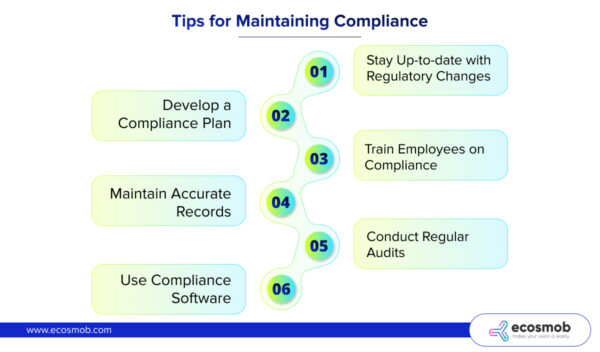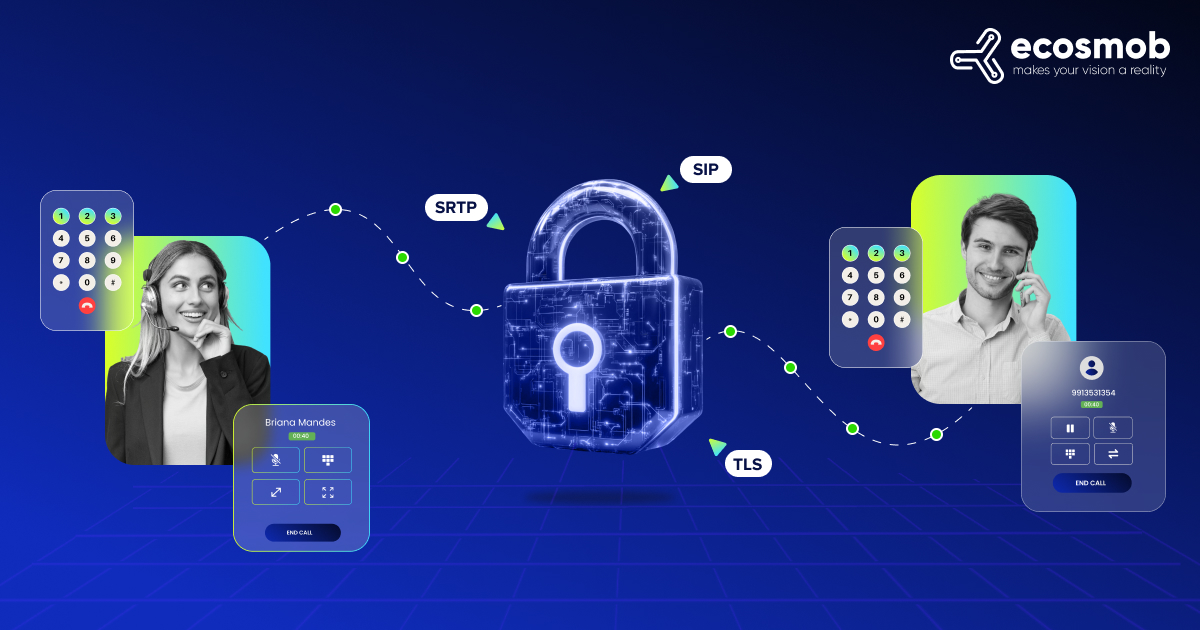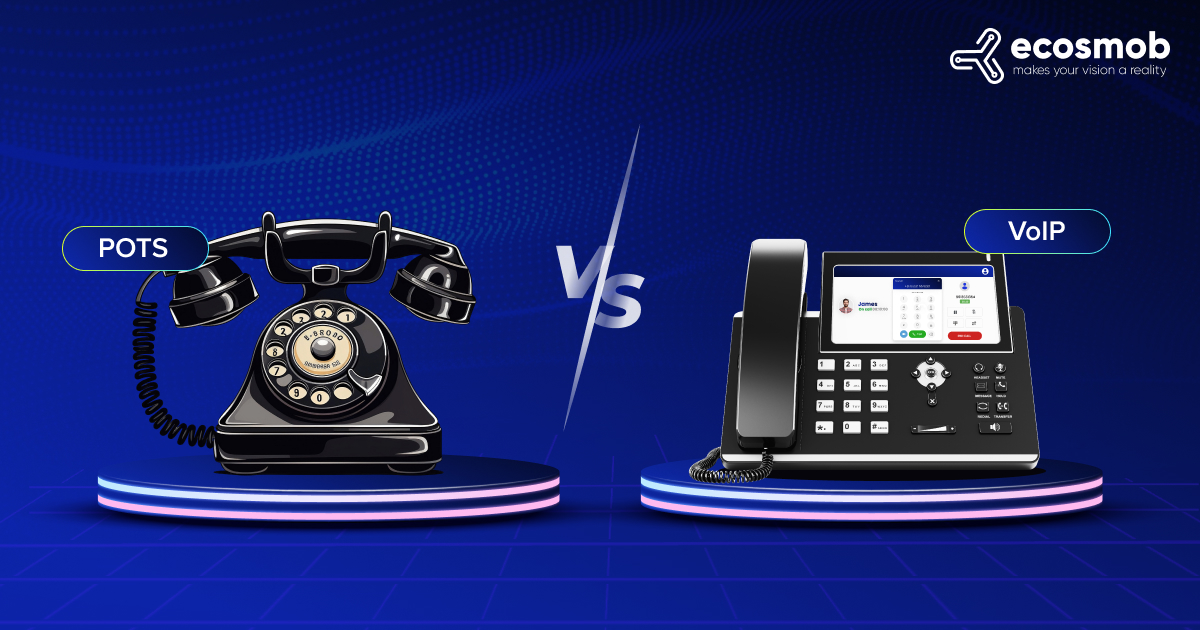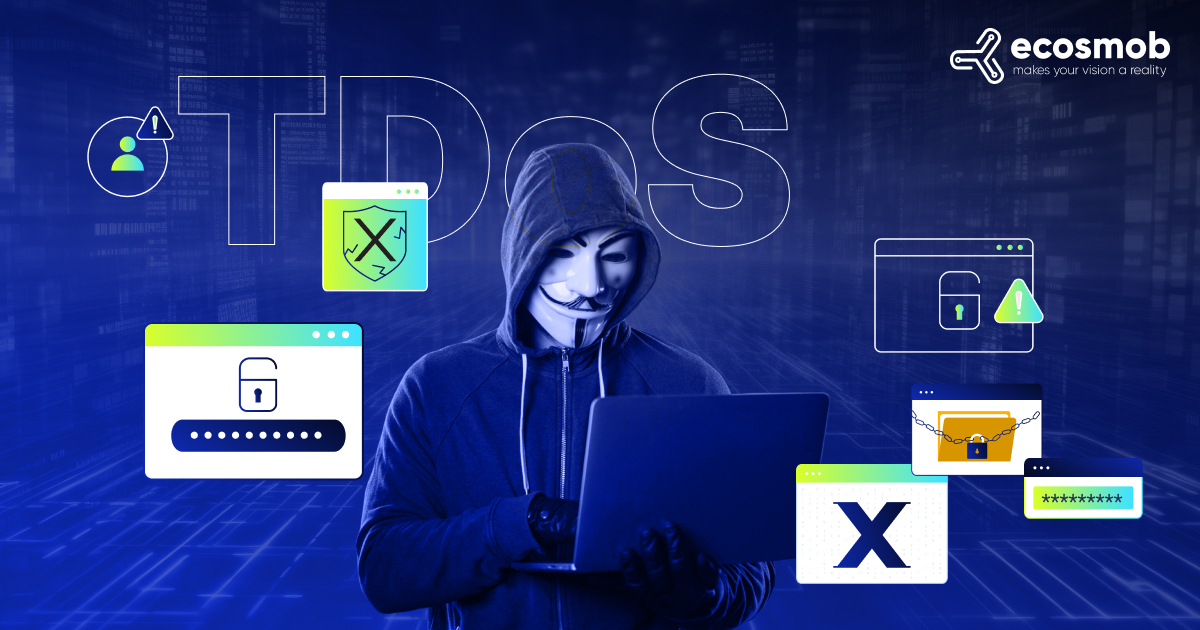QUICK SUMMARY
This guide covers compliance recording essentials for businesses, including regulations, best practices, and a checklist to ensure compliance. Learn how to securely store, manage, and analyze recorded interactions while adhering to legal standards.
The Reality of Compliance Call Recording is no longer just a regulatory box to tick; it’s a strategic necessity. Failing to comply can lead to fines, legal issues, and damage to your brand. But is your business genuinely compliant, and how can you ensure you’re up to standard? This blog will provide actionable insights to ensure your business is compliant and efficient in its recording practices.
Ready to Be 100% Compliant? Get Your Checklist and Stay Ahead!
Understanding Compliance Recording for Businesses
Compliance recording refers to recording and managing voice or video communications under specific regulatory requirements. Here’s what makes a compliance recording effective:
- Secure & Encrypted Storage: Use military-grade encryption (such as AES-256) to store recordings securely.
- Access Control & Permissions: Define roles and permissions to restrict access to sensitive recordings.
- Data Retention Policies: Customize retention periods for different data types and regulatory needs.
- Audit Trails & Monitoring: Maintain audit logs to track access, downloads, and sharing activities.
Understanding compliance recording for your business is about creating a system that securely captures, stores, and manages all your voice and video interactions. By aligning your recording practices with regulatory standards and using them to enhance operations, you ensure legal compliance and create a more transparent, secure, and efficient communication process.
Key Regulations to Know
Compliance recording is governed by several regulations that vary depending on your industry, geography, and data type you handle. Here are some of the critical rules that businesses should be aware of:
1. PCI-DSS (Payment Card Industry Data Security Standard)
-
-
- Scope: Applies to companies handling card payments.
- Requirement: Securely handle card information. Recordings must be encrypted, and sensitive data should be redacted when needed.
- Best Practice: Use manual PCI DSS redaction to protect sensitive information during calls.
-
2. HIPAA (Health Insurance Portability and Accountability Act)
-
-
- Scope: Applies to healthcare providers and related businesses.
- Requirement: Healthcare businesses must ensure that any recorded patient information is accessible and secure only to authorized personnel.
- Best Practice: Implement stringent access controls and encryption.
-
3. GDPR (General Data Protection Regulation)
-
-
- Scope: Applies to any business processing the data of EU citizens, regardless of location.
- Requirement: For businesses handling data of EU citizens, recordings must have proper consent and follow data security and retention guidelines.
- Best Practice: Obtain consent before recording and ensure the right to be forgotten is applied to recordings when necessary.
-
4. Markets in Financial Instruments Directive II (MiFID II )
-
- Scope: Applies to financial services within the EU, particularly in the securities and trading industry.
- Requirement: Financial firms must record and retain conversations related to transactions and investment advice.
- Best Practice: Utilize advanced playback and tagging for easy retrieval and documentation of recorded conversations.
5. Dodd-Frank Act
- Scope: U.S.-based financial institutions and companies engaged in trading and securities.
- Requirements: Requires recording of phone calls related to trade transactions. The recordings must be stored securely and made easily accessible for regulatory review.
- Best Practices: Leverage automated tagging for easy search and retrieval of calls and ensure that all recordings are encrypted and stored securely for regulatory review.
By following these regulations and this checklist, your business can confidently manage recorded communications while complying with industry standards and laws.
The Compliance Recording Checklist
Staying compliant with call recording regulations can be complex, but a comprehensive checklist helps ensure your business meets all necessary standards. Here’s a detailed breakdown of each essential step:
1. Encryption & Secure Storage
Encrypt and securely store all recordings with AES-256 encryption and set appropriate access permissions.
- Encrypt All Recordings: Use AES-256 encryption or higher for secure storage.
- Store Securely: Use cloud storage with secure access, such as AWS S3.
- Access Controls: Set permissions for who can view, download, or share recordings.
Securely encrypting and storing recordings with precise access controls is critical to protecting sensitive information and meeting compliance requirements.
2. Retention Policies & Legal Holds
Define retention periods for recordings and apply legal holds to preserve data when necessary.
- Set Retention Periods: Define how long different types of recordings should be stored based on regulatory and business needs.
- Implement Legal Holds: Use legal hold features to retain recordings indefinitely for litigation or training purposes.
Properly set retention policies and use legal holds to ensure that recordings are kept for the correct duration and protected when required.
3. Quality Assurance & Monitoring
Use quality assurance tools to evaluate calls and have supervisors monitor compliance standards.
- Evaluate & Monitor Calls: Implement quality assurance tools and evaluation forms to assess recorded conversations for compliance and service quality.
- Use Supervisor Licenses: Have dedicated roles (e.g., QA Supervisors) to monitor and ensure adherence to compliance standards.
Regularly evaluate and monitor recorded interactions to maintain high service standards and ensure all communications comply with regulations.
4. Secure Sharing & Redaction
Share recordings through secure, encrypted links and redact sensitive data to meet compliance.
- Compliant Call Sharing: Share recordings securely with encrypted links and set expiration times for access.
- Redact Sensitive Information: Use manual redaction tools to mask PCI DSS or other sensitive data as required.
Safeguard shared recordings with encryption and applied redaction tools to sensitive information, maintaining security and privacy.
5. Comprehensive Reporting & Dashboards
Track call data and maintain audit logs using reporting tools and dashboards for transparency.
- Implement Reporting Tools: Use dashboards to track call volumes, quality metrics, and performance indicators.
- Audit Logs for Security: Maintain detailed logs to record who accessed, shared, or downloaded recordings.
Comprehensive reporting and audit trails provide transparency and allow businesses to control recorded communications fully.
6. Transcription & Sentiment Analysis
Transcribe calls automatically and analyze the emotional tone for deeper insights into interactions.
- Automate Transcription: Use speech-to-text capabilities to transcribe recorded conversations for easy reference.
- Sentiment Analysis for Context: Utilize flags to identify and analyze the emotional tone of conversations, providing deeper insights into customer interactions.
Transcription and sentiment analysis enhance the value of recorded data by making it searchable and providing deeper insights into customer experiences.
By following this checklist, your business will be better equipped to handle compliance recording requirements, securely manage sensitive data, and create a robust structure that minimizes risk while optimizing call quality and regulatory adherence. Regularly revisiting and updating these practices will ensure you stay on top of compliance, giving you peace of mind and protecting your business from potential pitfalls.
Why Is Compliance Recording Crucial for Your Business
Compliance recording is critical in industries where sensitive information is exchanged, such as financial services, healthcare, and telecom. It ensures that all conversations and transactions are securely recorded, stored, and managed as per regulatory requirements. By following compliance standards, businesses can:
- Avoid Legal Penalties: Failure to comply with regulations like PCI-DSS, HIPAA compliance, and GDPR can lead to substantial fines.
- Improve Quality Assurance: Monitoring conversations improves service quality and customer satisfaction.
- Enhance Security: Safeguarding data through encryption and retention policies protects business and customer information.
By prioritizing compliance recording, your business fulfills regulatory obligations, strengthens its operational processes, improves customer relationships, and protects against potential risks or security breaches. Compliance is more than a checkbox—it’s an essential part of responsible and strategic business management.
How to Implement Compliance Recording in Your Business
Implementing compliance recording in your business involves a step-by-step approach to ensure you meet legal requirements, safeguard sensitive information, and improve operational processes. Here’s a structured approach:
Step 1: Identify Your Compliance Requirements
- Analyze which regulations apply to your industry (e.g., PCI-DSS for financial, HIPAA for healthcare).
Step 2: Choose the Right Platform
- Platform Features to Look For:
- Compliant Call Recording: Must adhere to all regulatory requirements.
- Cross-Platform Integration: Ability to capture recordings from different platforms, such as VoIP systems or unified communication tools.
- Admin Licenses: Manage user permissions effectively.
Step 3: Ensure Secure & Centralized Access
- Use a centralized dashboard to manage, monitor, and track all recordings.
- Ensure access log monitoring and that every access, download, or modification is logged, and review logs regularly for any anomalies.
Step 4: Implement Advanced Playback & Tagging
- Use tagging to label calls based on criteria such as customer type, call outcome, or department.
Step 5: Train Staff on Compliance Protocols
- Educate your team about compliance requirements, proper call handling, and secure information-sharing practices.
By following these steps, you can implement a robust compliance recording system in your business that meets regulatory requirements and improves operational transparency and customer service.
Advanced Tips for Maintaining Compliance
To ensure your business stays ahead and maintains the highest level of compliance for recorded communications, consider these advanced strategies:

- AI Agent for Consumer Product Compliance: Consider deploying an AI agent for consumer product compliance to streamline monitoring, automate risk detection, and ensure regulatory alignment across your product offerings.
- Regularly Review Policies: Revisit your data retention and sharing policies regularly to ensure they are up-to-date with current regulations.
- Prepare for Audits: Keep records of compliance measures, access logs, and quality assurance reports to produce evidence during audits quickly.
- Integrate with Third-Party Tools: For businesses using CRM or other systems, ensure your compliance recording platform offers API support for seamless integration.
By incorporating these advanced tips into your compliance recording strategy, you can meet legal requirements and streamline operations, secure sensitive data, and create a proactive compliance culture that benefits your business and your customers.
Compliance recording is a critical practice that can protect your business from regulatory issues or expose you to significant risks. With solutions like those provided by Ecosmob Technologies, implementing a solid compliance recording strategy with secure storage, customizable retention policies, and quality assurance features becomes straightforward. Leveraging advanced tools and expertise, Ecosmob Technologies helps your business stay compliant, safeguard sensitive data, and improve overall communication processes.
By following the checklist and best practices outlined in this guide and integrating trusted solutions from Ecosmob Technologies, your business can confidently navigate the complexities of compliance recording and ensure you’re always on the right side of the law.
Secure Your Communications Today and Protect Your Business from Compliance Risks!
FAQs
What is compliance recording, and why is it essential for my business?
Compliance recording refers to securely recording and managing voice or video communications to meet industry-specific regulations. It's crucial for businesses as it helps to avoid legal penalties, safeguard sensitive data, and improve service quality by ensuring all interactions adhere to regulatory requirements.
How can I ensure that my call recordings comply with data protection laws like GDPR or HIPAA?
To ensure compliance, you must:
Obtain consent from call participants.
Use encryption (e.g., AES-256) for secure storage and transmission.
Implement role-based access controls and user permissions.
Customize retention policies based on applicable regulations. Using platforms like those can help meet these requirements effectively.
How long should I retain call recordings, and how do I manage retention policies?
Retention periods vary by regulation and industry. For example, financial firms under MiFID II must keep recordings for at least many years, while healthcare may have different requirements. Customizing retention periods and implementing automated deletion processes once the specified time frame expires is crucial to ensure compliance.
What should I do if a customer requests that their recorded call be deleted?
Under regulations like GDPR, individuals have the "right to be forgotten." If a customer requests deletion, you must securely remove the recording from your storage while maintaining any necessary audit logs to prove compliance with the request.
How can you help businesses with Compliance recording?
Comprehensive compliance recording solutions with features like encrypted call storage, customizable retention policies, secure sharing, and quality assurance tools. Their platform helps businesses securely manage recorded communications, meet industry standards, and easily integrate with other systems for seamless compliance.

















